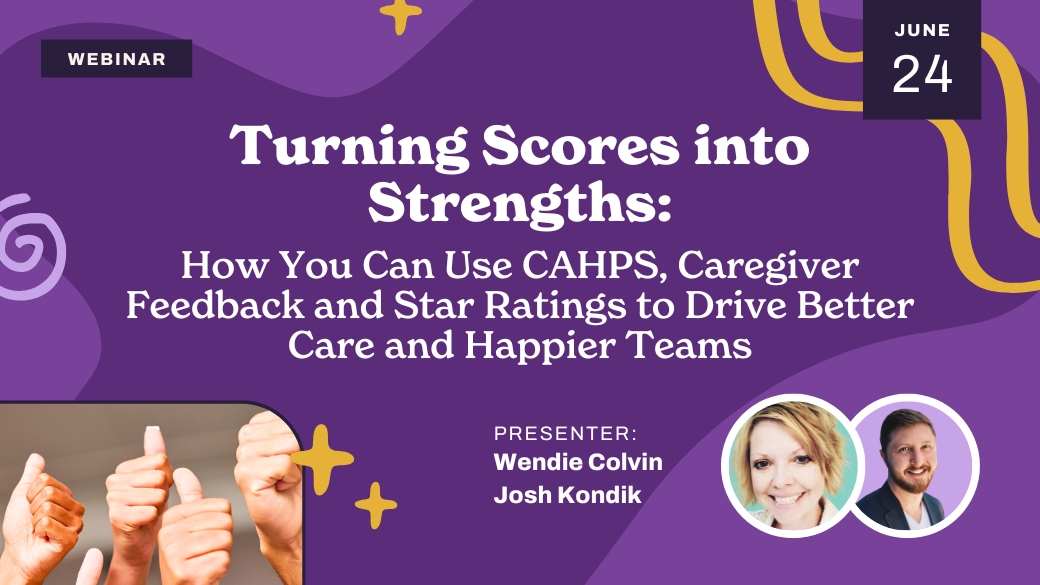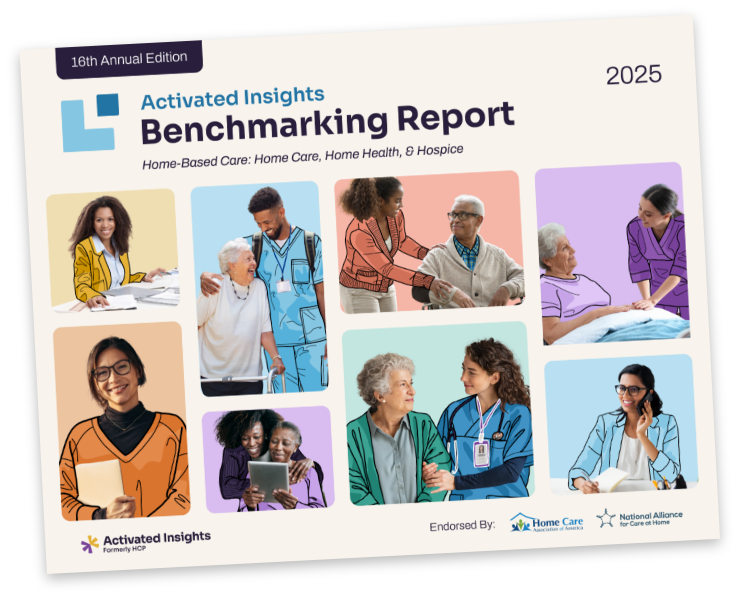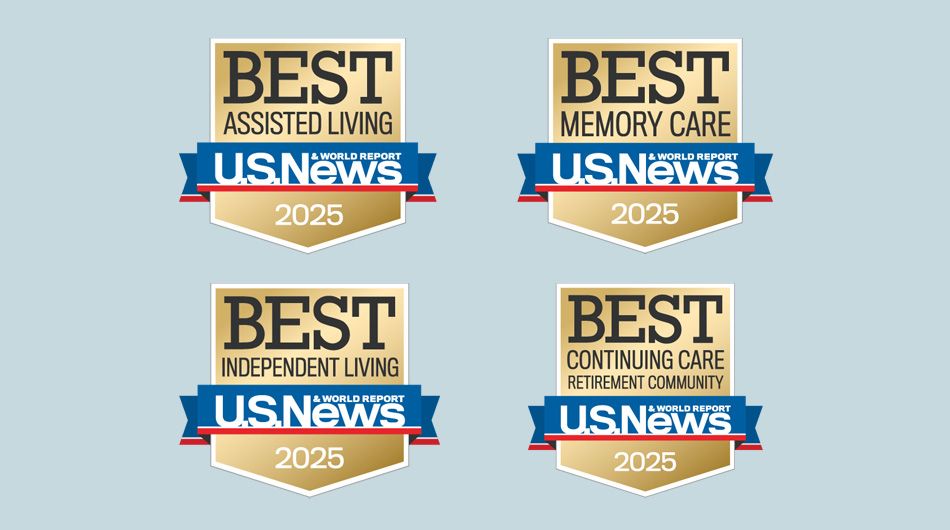97.8% of agencies say caregiver shortages had a negative impact on their business, according to data from the Activated Insights Benchmarking Report. The number of agencies who said it had an extremely negative impact jumped nearly 10% from last year to 34.1%.
The message is clear: your home care agency’s success depends on your ability to recruit and retain top caregivers.
It sounds simple, but the average agency currently has to replace 2/3 of their caregiving staff every year. At the cost of $2600 in lost revenue per lost caregiver, reducing caregiver turnover and filling open positions faster is likely already at the top of your to-do list.
Despite the historic caregiver shortage, some home agencies seem to have a significant upper hand in finding, hiring, and keeping the best caregivers. It is a clear solution that’s unfortunately easier said than done: to be a competitive employer, you need a good culture, competitive pay/benefits, and the best possible caregiver experience.
To complicate matters even further, your culture won’t help you hire more caregivers unless you know how to communicate it with an effective recruitment process.
The good news? We’ve broken down everything you need to know about hiring (and keeping) caregivers that will stick with your agency for the long term.
Step 1: Prepare for Success
Race car driver Bobby Unser once said, “Success is where preparation and opportunity meet.” Before you start your engines (or rather, your new recruitment initiative), it’s critical to define what success looks like and the steps you’ll take along the way.
Before you hit “post” on your job ad or set up an interview, you need to:
Define Your Ideal Candidate
Picture the perfect caregiver for your agency. Who are they? Do you know what it takes to attract them?
Your top performers should be your blueprint for your ideal candidate. Create a profile based on what makes them so successful to keep you focused on who would be the best fit for your agency and which skill gaps your agency still needs to fill.
Not every caregiver has to fit your mold exactly, but it will help you know which employees check enough boxes to keep you from making poor hires just to fill an open position.
Develop Your Employer Brand
It’s an employee’s job market, and other industries are offering increased hourly wages and unprecedented signing bonuses. To attract long-term employees without a big business budget, you’ll want to attract candidates who feel job and personal fulfillment through helping others.
86% of millennials, who will make up over 75% of the workforce by 2025, would take a pay cut to work for a company that aligns with their values. A core value-driven employer brand is the key to resonating with candidates who share your vision for the future.
Strengthen your employer brand by defining or revisiting your agency’s core values. Take the time to gather feedback from current employees to discover the blind spots your agency could improve upon and which aspects of your culture they like the most.
After evaluating what your current employer brand is and what you would like it to be, show candidates how you live up to it. Feature your company’s culture throughout the interview process to give both parties the opportunity to decide whether your mission fits their values and their why.
CUSTOMER STORY
And they attribute it directly to one tool.
Decide on Total Compensation
Over 70% of employees globally believe salary transparency is good for business, and that attitude has extended to the hiring process as more and more employers are including pay ranges in their job postings. Defining your total compensation ahead of time, including benefits, can help you communicate to applicants what your agency offers its employees.
How much you should pay your caregivers varies by region, but it can deeply impact caregiver retention. The median hourly wages for caregivers classified as companions/homemakers by region are:
Paying caregivers more directly correlates to improved retention, with the benefit seeming to level off at a few dollars per hour above the regional median.
Benefits are a critical part of your recruitment and retention strategy. When you’re not able to offer higher wages, improving low-cost benefit offerings can help you achieve a better total compensation package to offer job applicants. By federal law, the caregiver benefits you are required to offer to full-time employees are:
Different states require a variety of additional benefits, so check your local regulations to ensure your benefits are compliant.
Benefits you can offer caregivers to stay competitive include:
Step 2: Choose the Right Recruitment Sources
As the popular saying goes, “You shouldn’t put all your eggs in one basket, nor should you get all of your job candidates from the same source.” At least, it’s a popular saying around here.
Finding the best sources of job applicants is a delicate balance: you want a lot of exposure for your job posting, but you need to filter through those candidates for the caregivers who will stick with your agency for the long term.
The right recruitment mix for your agency will likely be a combination of:
Online Job Boards
Indeed has been the top recruitment source for home care agencies for several years now, according to data from the Activated Insights Benchmarking Report. It’s with good reason—the platform boasts over 250 million unique visitors per month. However, only about 25% of employees found through a job board will stay longer than 2 years.
Optimize your job posting to find caregivers who will stay for the long term to make the most of this pool of applicants. More on that in the next step.
Social Media
Facebook had 1.93 billion daily active users at the end of 2021. If you’re looking to recruit where your future caregivers are already spending their time, social media is a pretty good bet.
To recruit more caregivers with social media, join job search groups for your area and post your job postings when allowed. If an applicant who looks like they may be a good fit posts in the group that they are looking for work, consider reaching out to them to share a link to your job openings.
You should also be sharing your job openings on your company page. To maximize your results:
Virtual Hiring Events
The caregiver hiring process moves fast; applicants are being hired by another agency before they even make it to the interview. Eliminate interview no-shows with virtual hiring events that get caregivers started on the application process while the excitement of your agency is fresh on their minds.
Set aside a couple hours to host a virtual open house:
While virtual events can help you reach a wider audience, you can also hold live “open house” caregiver recruitment events where you invite caregivers to your office.
In-Person Job Fairs
Career fairs are the one location where everyone who walks by your booth is looking for a job.
Career fairs provide a unique opportunity for your audience to engage with your staff and learn what it would be like to work for you. To make the most of job fairs:
Working with a Recruiter
If you’re like many other agencies, you may have determined that hiring a recruiter for your home care agency is too expensive—but it may be costing you money.
With caregiver turnover at 65% (costing your agency $2600 in hiring costs and lost business each), you can save a lot of money and heartache by filling positions faster, with better candidates. So at what point is it cost effective for you to hire a recruiter? We’ve done the math.
The average recruiter makes around $52,000 annually. If your agency has a minimum of 62 employed caregivers, then the amount of money you’re saving just in turnover costs is equal to the amount of money you would pay a recruiter. If you’re averaging $136,890 in annual turnover costs, the average recruiter would save you $68,445—over $16,000 more than their salary.
This doesn’t account for other ways recruiters save your agency money, such as recruiting better candidates, which in turn reduces turnover costs further. Perhaps most importantly, they’ll also free up your time to take on other tasks that contribute more to the growth of your agency.
Creating a Caregiver Referral Program
Caregivers sourced from a referral program have a lower turnover rate than any other recruitment source. Even better, a referral program can lower your cost per hire while improving morale. To make the most of a caregiver referral program:
Step 3: Create and optimize your job posting
There are 10 new jobs posted on Indeed every second on average. That adds up to nearly a million jobs posted every day. Multiply that out across every online job board you’re using, and you’re facing some daunting competition.
While you certainly aren’t competing with every single company posting jobs online, it’s crucial to ensure your ad stands out to your ideal candidates.
To capture applicants’ attention in a crowded employment market, make sure to:
Offer What Candidates Want
One of the most important things to remember when posting a caregiver job on Indeed or another job board is to offer value directly to the applicant. There are a variety of ways to do this, but perhaps the most important is to focus on putting the caregiver first
The number one reason caregivers accepted a job in 2020 was that it was the first job they were offered, so start your job posting with phrases like:
If you frequently hear the same questions in interviews, you may want to start making the information easier to find in the job posting.
Go Mobile-First, Not Just Mobile-Friendly
50% of home care applicants use their smartphone as the sole technology for applying to jobs online. If your postings are too long or have formatting errors, a candidate will just keep scrolling.
As you’re auditing your recruitment process, ensure your application can be completed with a phone to attract the most talent with your job posting.
Make an Application Process That Doesn’t Require a Map
Focusing on the caregiver-first mindset means reducing the number of hoops applicants need to jump through. If your hiring process is over-complicated, you’re probably losing out on a lot of potential candidates.
Indeed and many other job sites give employers the option to gather applications directly on their website or link out to a careers page. Whatever option you choose, you’ll want to make sure that you’re striving for simplicity.
With the caregiver shortage, there are a lot of open jobs right now, so it’s not uncommon for an applicant to start an application with your company, realize the process is too complicated, and then leave it unfinished.
Choose Between Paid or Free Ads
The difference between paid and free ads is more than just where your job ranks in search results. If you have the budget to run paid ads, use a combination of both approaches to see what works best for you.
With paid ads, you’ll find that you have a little more leeway with titles and verbiage than you would with free ads. For example, using the title “CNA – $500 sign-on bonus” might get flagged as a free ad, but not as a paid ad.
According to Indeed, sponsored ads are 4.5 times more likely to result in a hire. It’s important to consider your market and what piques their interest. Sometimes free ads work better in certain areas and can be more engaging for caregivers. Some caregivers will scroll right past the sponsored, paid ads because they look too promotional or “salesy.”
Update and Repost Ads on a Schedule
No matter what type of ad you’re posting, you’ll want to make sure that you’re avoiding duplicate posts. Job titles and descriptions can’t be identical, which provides the perfect opportunity to test out different strategies and wording. You should also place the location for each posting at least 25 miles apart from each other. Place one job ad in the center of your city or target area and others on the outskirts to draw in applicants that might not see the other.
If you’re using free ads, the longer you go without updating or reposting your ads, the farther down they’ll appear in search results. However, updating too frequently will get your ads marked as spam. The best balance here is to run 3-4 ads at a time and refresh one each week, so you’re never reposting any single ad more than once a month.
The same principle applies to paid ads; run 2-3 ads each month to try different strategies without dividing your budget so much it runs out.
Indeed’s advice for reposting your jobs includes:
Track Your Successes (and Less-Than-Successes)
Evaluate which of your ads and candidate sources are the most successful by tracking:
If you’re using paid job ads, your cost per applicant and cost per hire will show you which ads are successful and which you are wasting your budget. Ideally, you should review your numbers and update your strategy at least once per month.
Step 4: Put caregivers first in your hiring process
By now, we’ve all heard the news: it’s an applicant’s job market.
Employers no longer have time to put applicants through a lengthy, detailed application process. The most successful home care agencies are the ones who tailor their hiring to get top talent through training and on the job as quickly as possible, using methods that are convenient for their future caregivers.
You can recreate their success if you:
Speed Up Your Hiring Process
After talking with thousands of caregivers, we found the number one reason most people choose to work for an agency: it was the first job they were hired for.
You can have the best scheduling, salary, benefits, and clients in the industry, but if you’re taking weeks to respond to caregivers, you’ll lose your best applicants to more agile competitors.
How long does it take your team to reach out to candidates to schedule an interview? Where can you remove additional steps from your process?
Interview with Questions that Make Your Best Candidates Shine
Sometimes a candidate aces the caregiver interview, then realizes on day one that they just aren’t a good fit for caregiving. It’s inconvenient for you, embarrassing for the new hire, and potentially frustrating for your other staff who have already invested time into training them.
To identify the candidates who can really deliver on what your agency needs, update your interview questions to see each interviewee’s potential and problem-solving skills in action.
Ask questions about:
Past Experiences
Skills
Hypothetical Scenarios
Asking leading questions like these will give the candidate an opportunity to show, rather than tell, whether they would be the perfect fit.
Set Realistic Expectations for Caregiving
When you’re feeling the pressure of a caregiver shortage, it can be tempting to present an idealized view of caregiving. However, this is a recipe for high turnover.
Offering complete honesty about the pay, benefits, hours, and day-to-day challenges a caregiver can expect may cause some candidates to drop out of the hiring process—but that’s a good thing.
Interviews are a two-way street. Transparency allows candidates who would be a poor fit the opportunity to self-select out of the position before you put resources into hiring and training them.
Stay in Contact So Candidates Always Know What’s Next
Agencies that don’t keep their candidates updated on the hiring process assume they’re the only agency their employees are applying to—which simply isn’t the case. While you want to take the time to ensure you hire the best employee, you need to make sure competitors don’t scoop them up first.
The hiring process for a caregiver should ideally take 10 days from application to offer letter. It’s important to make sure candidates know exactly when they can expect to hear from you next to keep them engaged.
Lack of communication is one of the most common caregiver complaints; your interview process is an opportunity to address it before a caregiver even joins your team. Frequent touchpoints will help caregivers get a taste of what it is like to communicate with you, as well as the accountability that will be expected of them.
Call candidates after their interview with clear instructions for moving forward. Stay in contact with your candidates to keep them excited about your agency throughout the hiring process.
Step #5: Hire and Onboard for Retention
According to myCNAjobs, many caregivers continue to interview with other companies after they receive an offer. This means that the clock on your 90-day retention starts ticking the second your new caregiver signs their offer letter.
67% of caregivers will leave their agency this year, and 57% of those caregivers who leave will do so in their first 90 days, according to the Activated Insights Benchmarking Report. Some caregivers are hired but fail to show up on their first day.
How do you hire and onboard with retention in mind? To start, you need to:
Get Caregivers to Show Up for Their First Day
Caregiver turnover can happen before your new hire even starts. While the majority of caregivers who quit do so in the first 90 days, some don’t even show up to their first shift.
While it’s tempting to just view that hire as flaky or irresponsible, multiple first day no-shows can reveal deeper problems within your agency.
One of the most common reasons caregivers “ghost” before their first shift is they fear they’re not the right fit for the position, and they’re too ashamed to address it directly with you. This is especially common when hiring candidates without previous caregiving experience.
You can help instill confidence in your new hires with a robust caregiver training program that shows them a clear career ladder within your agency.
The other top cause of a no-show for a first shift? Your new caregiver was hired by another agency that could get them started sooner. Many caregivers are living paycheck to paycheck, and unlike other industries, caregivers are available to start a new role after an average of just three days.
Get your new caregivers in the door and out into the field as soon as possible to improve day one retention.
Improve Post-Accepted Offer Communication
As we mentioned before, lack of communication is a top complaint among caregivers we interview. Don’t turn off your new hires by going radio silent the moment the ink on the offer letter dries.
If you’re seeing early turnover (or caregivers who don’t make it to their first day of work), it’s likely a sign that you need to improve your communication skills.
To keep caregivers excited about working for your agency, give them a phone call between hiring them and their first scheduled shift. Ask if they have any questions and confirm that they’re still good to come in. If they act hesitant, ask follow-up questions to identify how you can better support their onboarding. You’ll either help a great candidate feel valued and engaged or identify potential issues with a new hire before they become major problems.
Keep that communication going throughout the onboarding process. In an episode of our podcast, Dawn Spicer, Caregiver Development Manager at Home Instead of Jacksonville Illinois, said, “We touchpoint each week with [caregivers] to see how things are going so that they have the training they need. After we give them the initial training to build them up and make sure they have everything they need, once they get going, they might hit a little snag…and they might not feel comfortable asking for help. We set ourselves up to be right there to provide that when it’s needed.”
Support Caregivers During Their First 90 Days
We’ve mentioned before that the first 90 days are the most crucial for caregiver retention, but do you know why? As your caregivers get into the swing of their new job, the excitement you fostered during the recruitment process begins to wear off as they meet the day-to-day realities of being a caregiver.
Caregivers rarely get to see their coworkers, which can lead to feeling disconnected from their agency and becoming dissatisfied with their work. Your priority during your caregivers’ orientation and first 90 days is to help them feel like part of the team and empower them to succeed. To do that:
You Can’t Out-Recruit Poor Retention
You now know everything you need to create a top-tier caregiver recruitment program. If, after following these steps to optimize your hiring process to recruit long-term talent, you are still seeing high turnover or low applicant numbers, it may be a sign that something is amiss within your agency.
The best recruitment process in the industry won’t help if you’re not following through on what you promise when hiring new caregivers. Interviewing your caregivers and clients to get their unbiased feedback will help you find and address your blind spots before they turn into lost revenue.
Learn more:
Related Posts








